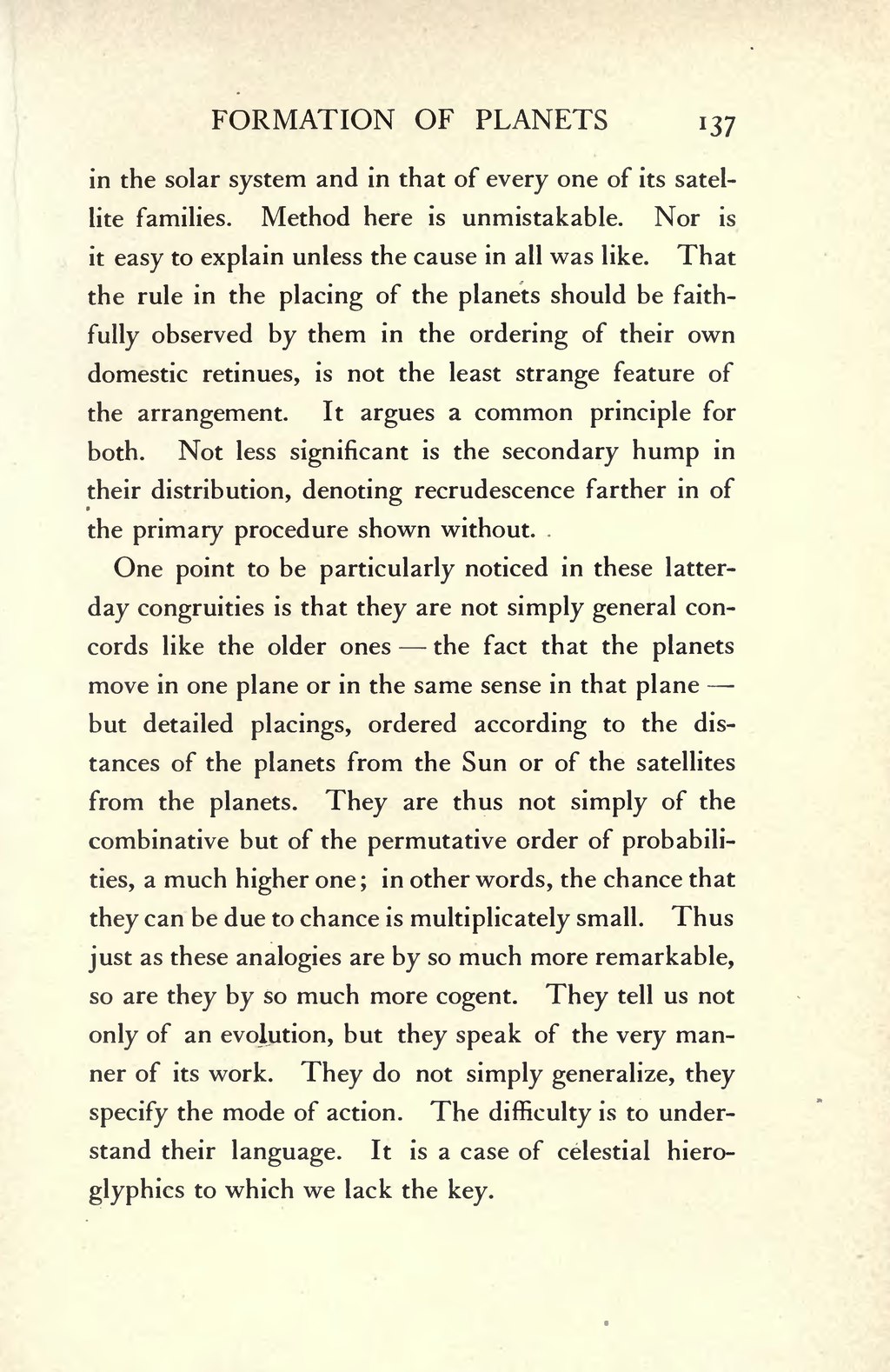in the solar system and in that of every one of its satellite families. Method here is unmistakable. Nor is it easy to explain unless the cause in all was like. That the rule in the placing of the planets should be faithfully observed by them in the ordering of their own domestic retinues, is not the least strange feature of the arrangement. It argues a common principle for both. Not less significant is the secondary hump in their distribution, denoting recrudescence farther in of the primary procedure shown without.
One point to be particularly noticed in these latter-day congruities is that they are not simply general concords like the older ones—the fact that the planets move in one plane or in the same sense in that plane—but detailed placings, ordered according to the distances of the planets from the Sun or of the satellites from the planets. They are thus not simply of the combinative but of the permutative order of probabilities, a much higher one; in other words, the chance that they can be due to chance is multiplicately small. Thus just as these analogies are by so much more remarkable, so are they by so much more cogent. They tell us not only of an evolution, but they speak of the very manner of its work. They do not simply generalize, they specify the mode of action. The difficulty is to understand their language. It is a case of celestial hieroglyphics to which we lack the key.
